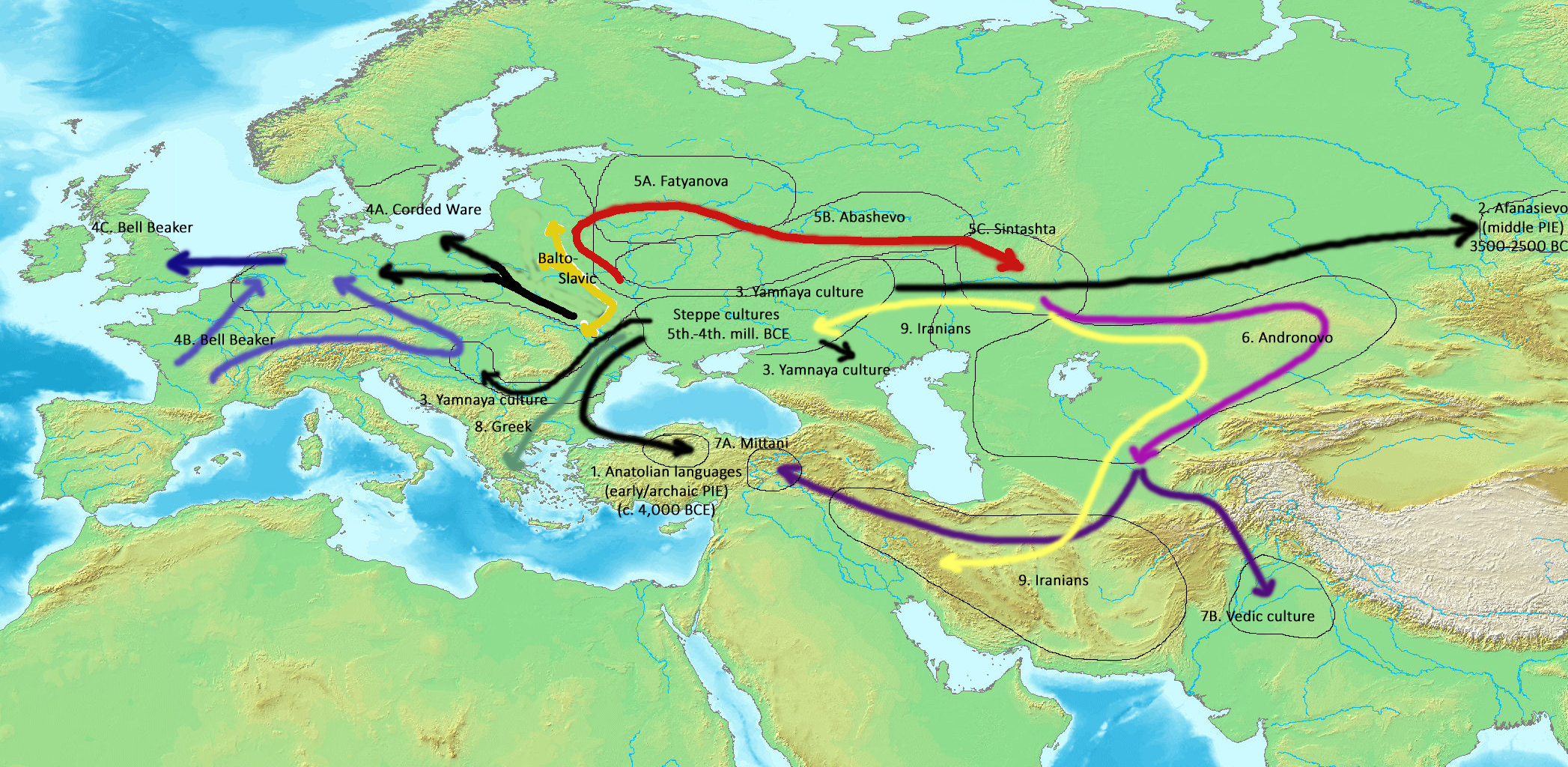« back

The Indo-European Migration
Apr 9, 2022- The Kurgan hypothesis attempts to explain how the Indo-European languages spread throughout Europe and parts of Asia.
- According to this hypothesis, Proto-Indo-Europeans inhabited the Pontiac Steppes (Eastern Europe) in roughly the 4th millennium BC. Around 3500 BC, a group of Proto-Indo-Europeans began to move southwards. This group became known the Anatolian branch. This branch included the ancestors of the Hittites.
- Around 3000 BC, more Proto-Indo-Europeans began to spread east and west. Those in the east are associated with the Indian (Sanskrit) and Iranian language branches. Those in the west are associated with the Germanic, Italic (Latin), Celtic, and Hellenic (Greek) language branches, among others.
- (The less popular Anatolian hypothesis suggests that Proto-Indo-European speakers lived in Anatolia during the Neolithic era and began to spread into Europe from around 7000 BC with the advance of farming.)
- The Yamnaya culture is one of the most well-known groups associated with late Proto-Indo-Europeans. More.
- The Yamnaya were a semi-nomadic people, who used ox-drawn carts and wagons. There is evidence that they also rode horses. These technologies may have made them relatively mobile.
- They buried their dead in pits (yama) beneath kurgans, which are a type of tumuli or mound.
